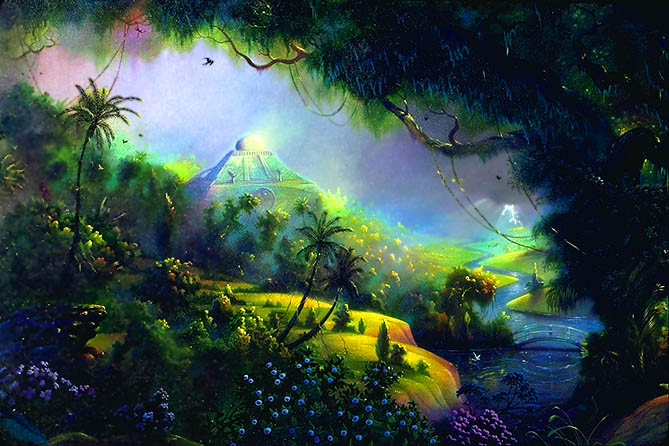Radhasoami, Beas Secret History, radhasoami, shabd
With a Great Master, Beas 1982(1934) page 159 : "Our Beas group had its inception through the work of Saint Baba Jaimal Singh, who was a disciple of the founder, Soami Ji, but was never connected with the Agra group. AND SO THIS CENTER HAS NEVER HAD ANY CONNECTION WITH THE AGRA GURUS...HAS NEVER HAD ANY SORT OF CONNECTION WITH THE OTHER CENTERS OR THEIR GURUS, except that of brotherly love". end quote
.......................
Both Jaimal and Sawan initiated under article 16 of the Council for Sat Guru Misra and Sawan also for Bauji Devi and Babuji Madhav Sinha until around 1918. ......................
"With the Three Masters", Beas 174 page 200 ; Sawan tells Chachaji (Pratap Singh, Swami Ji's younger brother, President of the Council) "I am unfit for this duty and some sadhu should be sent to initiate" . Chachaji states "..obey my order and start bestowing initiation". Chachaji asked Sawan in letter to appoint "some educated satsangi whom will then be sent paper initiation." ; as referenced in Letter #5, Spiritual Letters, Beas, 1965,p133. Beas books claim Sawan gave the initiations himself . If Sawan was a guru , why would they send him paper initiation and tell him to appoint some educated satsangi?
.......................................
Chachaji owned the Soami Bagh Gardens. Chachaji gave the Gardens to Sankar Misra, the third sat guru. Chachaji and Misra started the Council to promote peace and 'harmony' among the 'different sects and cliques' according to a Beas reproduced letter from Chachaji to Jaimal, dated August 4, 1902,(Corr.,Agra, v.2,p.604;also see Biography of Babuji Maharaj,Agra,1971,p.466).
.............
The Council ballots stated for management of Satsang and properties until the "Sat Guru again makes His advent. The Council will then only assist Him...", (ref. page 468 same book).
...........
Sudarshan Singh, Lala Suchet Singh and Lala Sujan Singh (Chachaji' sons) were also on the Council and ballots, Ref. Holy Epistles,Part1,1982,p.335. With four of Swami Ji's family on the ballots and later the Council, Jaimal's comment that Swami Ji's family had no connection with the Council is rediculous . Sons of Chachaji placed in voting ;#5 Sudarshan Singh 1718,#8 Suchet Singh 1587,#16 Sujan Singh 111. Sujan came on Council afterwards, as he was not in top ten. It should be noted the top ten vote getters received over 1444 votes each, 1444 was the tenth place. Third in votes was Lala Raj Narain Saheb with 1810 votes and forth Babu Baleshwar prashad of Allahabad with 1769. It must be remembered, the top ten vote getters would from the initial management Council.
......................................
The vote was not to determine the next sat guru. Chachaji, Sudarshan, Adjohia, etc., and everybody they would have told, already knew it was Sankar Misra. The fact that Misra beat Adjohia of Peepal Mandi in votes, with his group at Benares only 1/4 the size, shows Misra's universal acceptance as the next sat guru by the various groups that voted. Jaimal knew he would not get enough votes to place in top ten for Council, so he requested 3 seats
on Council as condition to join (along with some other rediculous requests mentioned in this article). It is very important to remember
when Jaimal was dying he said to go to Chachaji for the secret of sound current in Sat Nam and with questions. This is absolute proof
Jaimal (and Beas) consider Chachaji a Sant, as it is written in Beas books as quoted by Jaimal himself. At the exact moment Jaimal was dying and telling his followers to go to Chachaji afterwards, he was being excommunicated by Chachaji (sons and Council). Chachaji is also considered a sant by most or all RS groups.
...............................
Regarding Sawan in 1904 Professor Dr. David C. Lane Nov. 30, 1999 Internet Exsatsangi Club stated :
"My hunch is that Charan himself (like the Pope in the Catholic Church) believed in the Power of his own guru. We know that this is exactly how Sawan himself responded to his appointment. He knew he wasn't a master so he turned to Partap Singh (Chachaji) for some kind of way out or support."
.............
"With The Three Masters,1974,Beas,p.230, Sawan says in 1944 to group of people
he refused to give initiation after Jaimal died until prevailed upon by Chachaji. Sawan said his "mind continued to remain in a state of agitation until he was assured by what He saw that his initiates were being taken care of." Sawan does not tell how he determined he was a sat guru a decade or so later, being he was not appointed by anyone. In other books, Sawan says that the master's Guru, or His Guru, etc., are responsible for initiates (implying if current master not up to snuff, it can be rationalized by going back to competent master in past). ............
In Sawan's case, since he self declared himself a master, it means
disciples are fully at the mercy of his judgement on his own competency as sat guru, or better pray a past competent Guru will help !!! This is critical because Babuji Madhav Sinha was the guru
Sawan was initiating under when he made his break. Sawan obviously considered Babuji Sinha a sat guru, but Babuji Sinha completely denied
Sawan was such; and also said Sawan's initiations were invalid and not
under the protection of the Agra lineage in court depositions..
 c. Jeffrey K. Bedrick
c. Jeffrey K. Bedrick
|

